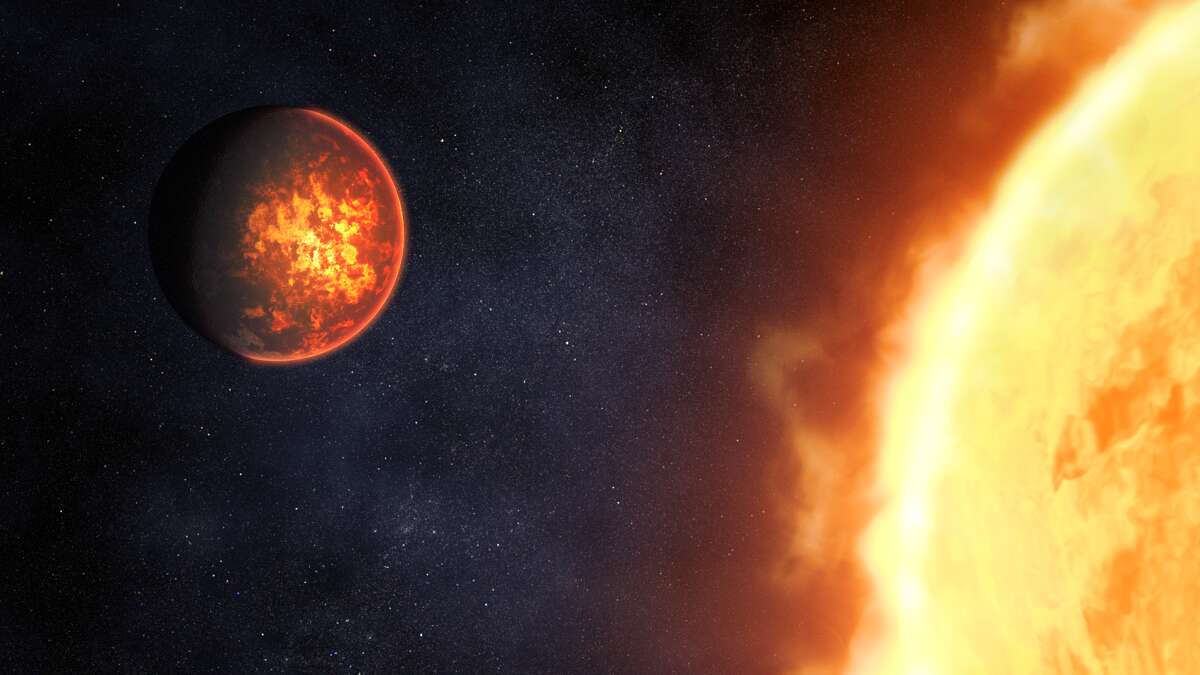
Artist rendering of exoplanet 55 Cancri e. Image courtesy of NASA, ESA, CSA, Dani Player (STScI)
NASA is set to unveil a look at two exoplanets that closely resemble the Earth which have been captured by the famous James Webb Telescope.
The telescope is taking a closer look at 55 Cancri e, a super-hot planet which orbits closely to its central star. According to scientists at NASA, the planet is thought to be covered in flowing hot magma. The potential existence of a weak atmosphere could mean that the planet experiences torrential rains of lava at night.
55 Cancri e takes 18 hours to orbit its central star. Oftentimes, stars are "tidally locked" which means the orbit of the object keeps the same side facing the star, keeping one side of the planet hot and the other cool. Scientists believe 55 Cancri e might actually rotate fully on its own, spreading the heat generated by its proximity to the star throughout its whole globe.
The James Webb Telescope is part of international space efforts to explore and chart further into our galaxy than ever before. Recent efforts to calibrate the telescope have seen dramatic improvements to image quality which have provided us with some truly stunning images of the stars.
Scientists also plan to use the telescope to observe LHS 3844 b, an exoplanet which features a much cooler temperature than its hellish counterpart. The geology appears to be solid rock and contains no atmosphere. The James Webb telescope is not able to capture a proper photo of this exoplanet which gives scientists the chance to use advanced tools to measure infrared signals to determine more about the geology of this elusive exoplanet.
Data from both of these planets will provide scientists with more info to better understand the origins of exoplanets and even our own Earth. In a press release, Laura Kreidberg of Germany's Max Planck Institute for Astronomy said, “They'll help us learn what the early Earth might have been like when it was hot like these planets are today."
"The release of Webb’s first full-color images will offer a unique moment for us all to stop and marvel at a view humanity has never seen before. These images will be the culmination of decades of dedication, talent, and dreams – but they will also be just the beginning." said Eric Smith, a scientist on the Webb program at NASA.
The first images available to the public from the James Webb Telescope will be unveiled July 12 along with images from other projects, including those of the two exoplanets, which will be released in its first year of operation.
We can’t wait to see more of these exoplanets and discover more about the Galaxy!